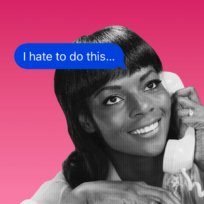Let’s be real—when it comes to fitness, there’s a lot of bullshit out there. How many days a week should I work out? Is the whole 10,000 steps goal bullshit, and where does that number even come from? There’s a lot of conflicting information to sift through, and it’s overwhelming enough to make you want to say “fuck it” and reach for some ice cream. That’s why, instead of spending hours on Google, we talked to Brooke Alpert, Registered Dietician and author of The Diet Detox: Why Your Diet Is Making You Fat And What To Do About It, to help us figure out what’s the truth about fitness and what’s bullshit. In addition to being a Registered Dietician, Brooke also got her MS from NYU, so safe to say she knows her shit.
What are the most common fitness myths you see people falling for?
- Exercise is the most important part of losing weight. Exercise is great for your health—but it’s your diet that takes the weight off. Exercise helps you keep the weight off and shape your body. You can’t out-exercise a bad diet.
- You should always work out first thing in the morning. Don’t fit yourself into your workouts—make them fit you! Exercise when you’re most likely to do it most often. Not a morning person? Then don’t exercise in the morning. Just be sure to put it in your schedule so you don’t skip out on it later in the day.
- Weights are only for guys! (Also see: Strength training will make me bulky!) Your workout can’t be all cardio—women need to strength train too! Strength training is a healthy way to burn fat, build muscle, and improve overall health. The elliptical alone won’t get you those summer abs you’ve been searching for!
- Spot reduction! It doesn’t work—weight loss and toning is a combo of good diet, strength training, and cardio to drop weight all over.
- Load up on protein after a workout! This is sort of true and sort of false—it’s all about how you interpret it. The problem with this “myth” is that most people overdo it on the protein and just end up taking in extra calories for no reason. What’s the point in doing the workout if you’re just going to eat a might-as-well-be-ice-cream protein shake when you’re finished? Make sure to avoid those calorie-packed bars promising 50g+ protein, too. Your body can only absorb 25-35 g protein at a given time—anything more won’t go to muscle repair, as post-workout protein is intended, but will instead be wasted by the body.
If I only have 20 minutes to work out, what’s the best way to maximize my time?
There’s no reason a workout has to be an hour long! HIIT, or high intensity interval training, definitely gives you the most bang for your buck, and I recommend it to all of my clients. This type of training involves repeated bouts of high intensity effort followed by varied recovery times. HIIT speeds up your metabolism and keeps it boosted for up to 48 hours—pretty good for 20 minutes! Since you’re speeding up and slowing down at different intervals, your body can never adjust or get too comfortable. The bursts of energy kick your body into gear!
HIIT helps with fat loss, muscle gain, blood sugar levels, aerobic health, and athletic performance—and it makes working out even easier to fit into your schedule. Plus it keeps things more interesting, so you’re less likely to get bored while working out. Additionally, HIIT raises your resting metabolic rate and the afterburn effect means your body is still working long after you leave the gym. Best of all, it can be kept strictly to cardio (treadmill sprints) or incorporate weights or even just body-weight exercises.
Is 10,000 steps really the ideal number we should be aiming for?
Just moving is what’s most important. If you can hit 10,000 steps that’s even better, but sometimes these numbers can be discouraging for people. Adding extra movement throughout the day, regardless of how many steps you get, is the ultimate goal. Park further away, take the stairs, walk to your coworkers desk instead of emailing.
What’s a common mistake you see people making when working out? What’s the worst mistake you could make?
One common mistake I see is people who think that one or two workouts per week are all they need to accomplish their weight loss goals. Yes, diet is the major part of any weight loss strategy, but you must exercise regularly. Beyond that, make sure it’s the kind of workout that makes you break a sweat, not just coasting on the elliptical! I want you to do a workout that’s high-intensity and efficient, rather than to move moderately for an hour. That’s why I’m such a big proponent of HIIT training.
My other rule is no more than two days off allowed. On non-exercise days, I still require my clients to move—they need to go for a walk, use the stairs instead of the elevator, or even just stretch. This helps them maintain a mind-body connection and create small moments of awareness throughout the day to keep them in tune with their bodies in order to feed them better.
But I really cringe when I see people working out so hard but then eating or drinking some nonsense food, like a smoothie made with frozen yogurt, right after they leave the gym. Don’t ruin your workout when you just killed it in the gym!
What are some of your favorite workouts?
A few years ago while writing my first book, I discovered a boutique gym called the Fhitting Room in New York City. The gym specializes in HIIT workouts and had me instantly hooked, especially once I started seeing such quick results. I love the trainers and their workouts so much, I even incorporated a few into my book, The Diet Detox. The book includes 10 Fhitting Room workouts you can easily integrate into your exercise routine. Some require equipment, some don’t. Some are more difficult, and some are shorter. All of them incorporate my beloved HIIT method, and they’re all guaranteed to make you sweat!
How many days a week should you really work out?
Around 3 days a week is a nice average for my clients. I recommend no more than two days off in a row between workouts, so if you get to the gym on Monday, then you can’t skip Thursday’s workout. I still want everyone moving each day, though!
How important is it to have a rest day? What should you do on a rest day?
While it’s smart to give certain muscles a break from repetitive workouts, I like rest days for the most important muscle, your brain. Taking a break from the gym is important for your mind and for the gym to be less of a punishment and more of a pleasurable experience.




















































